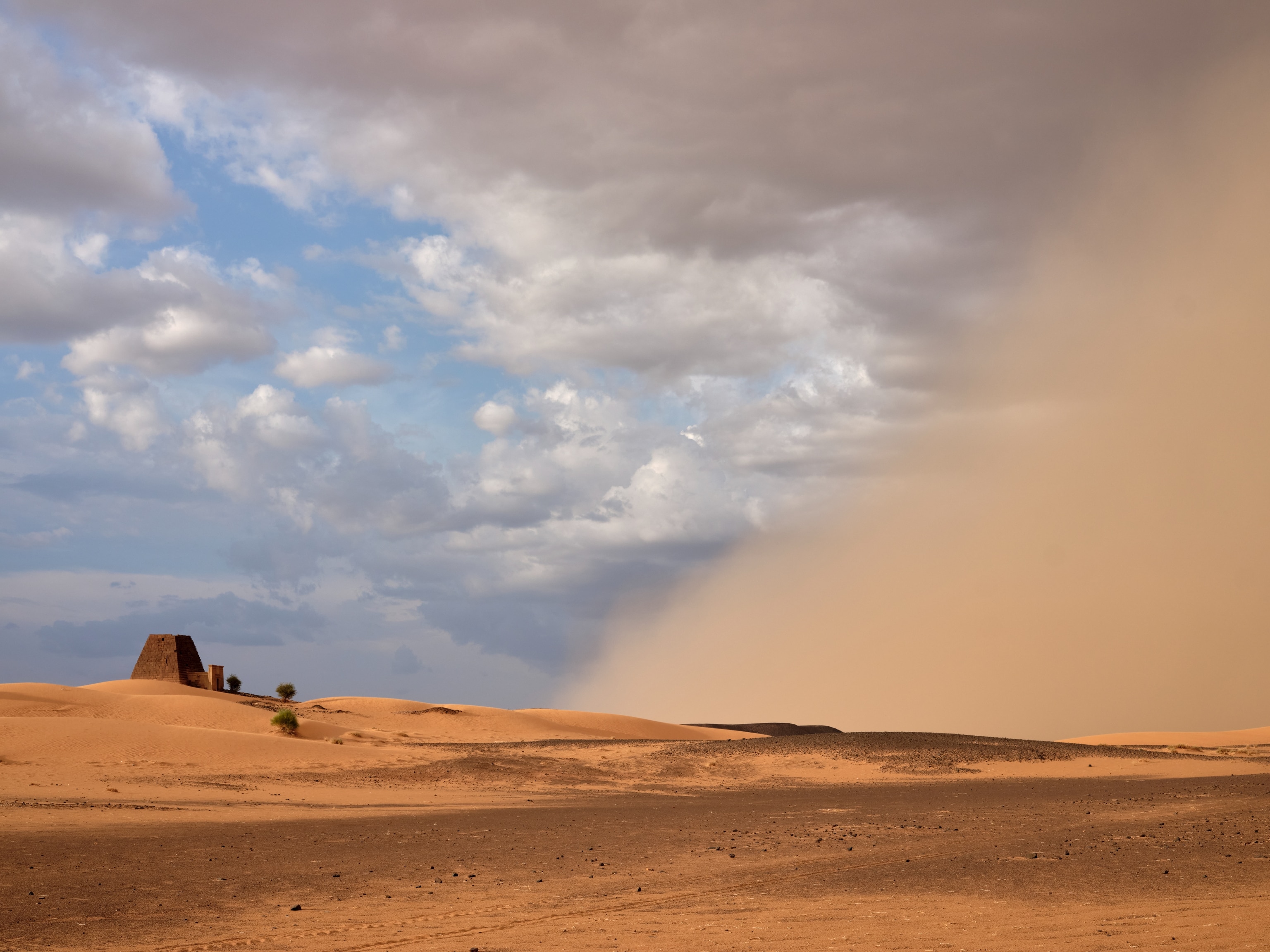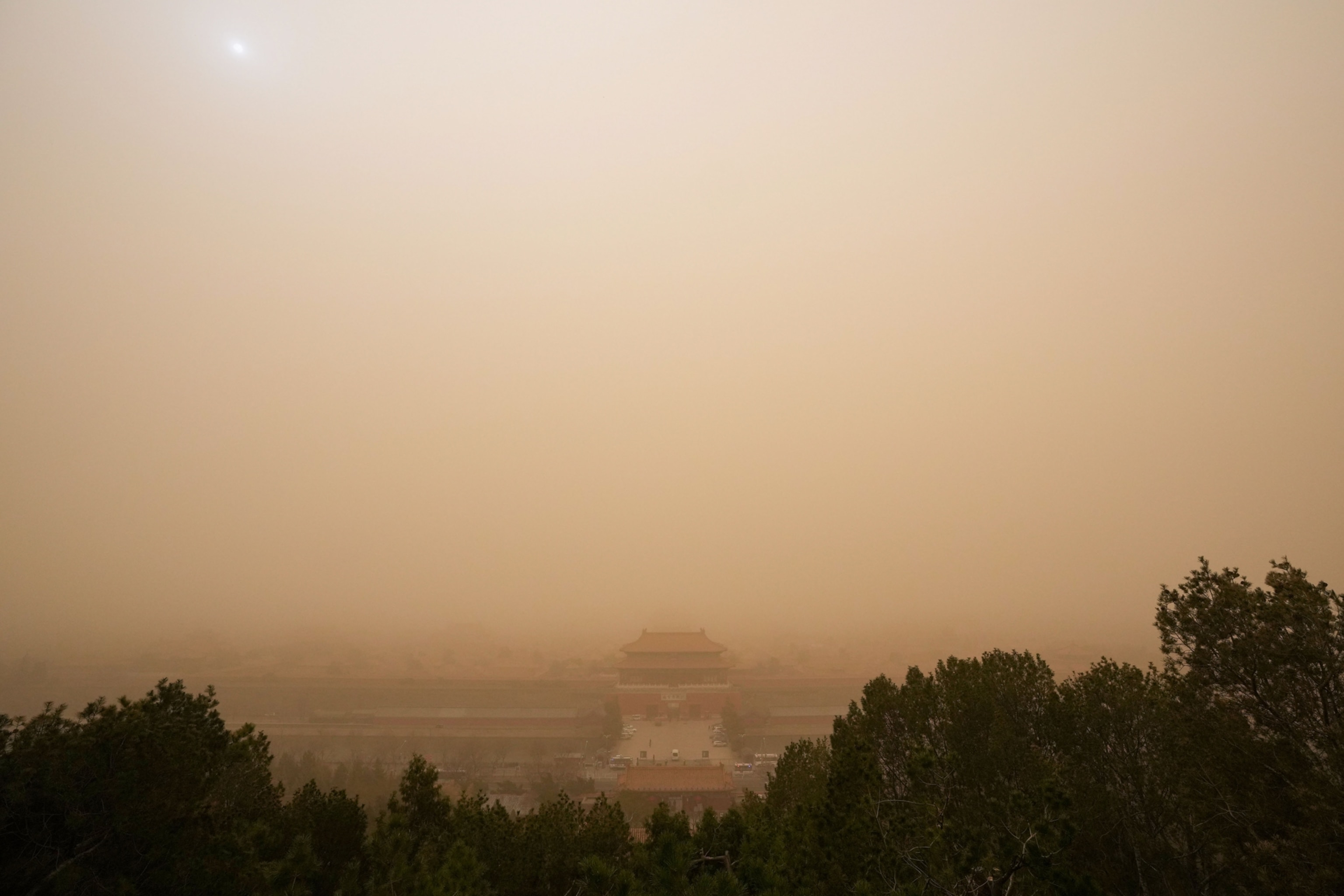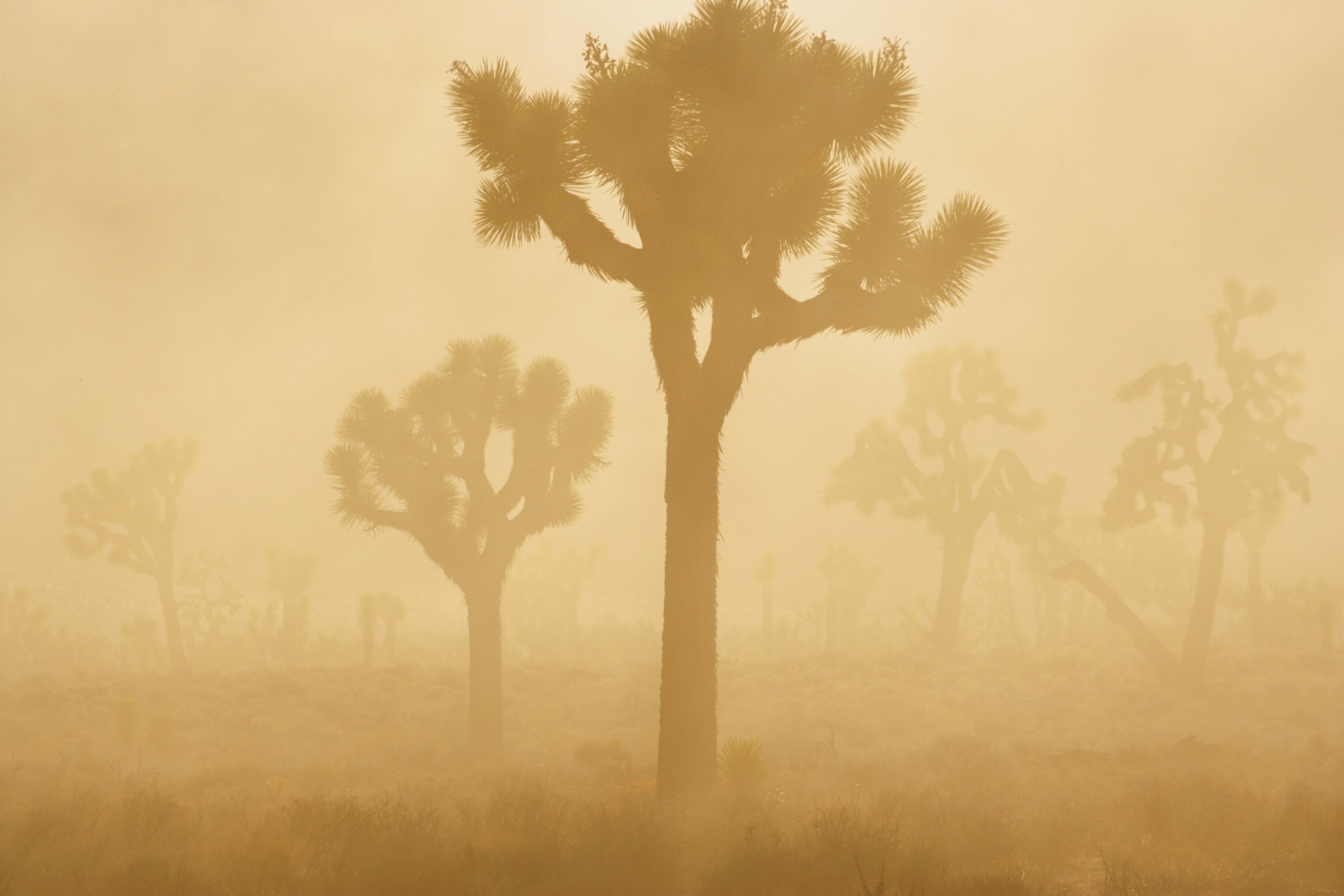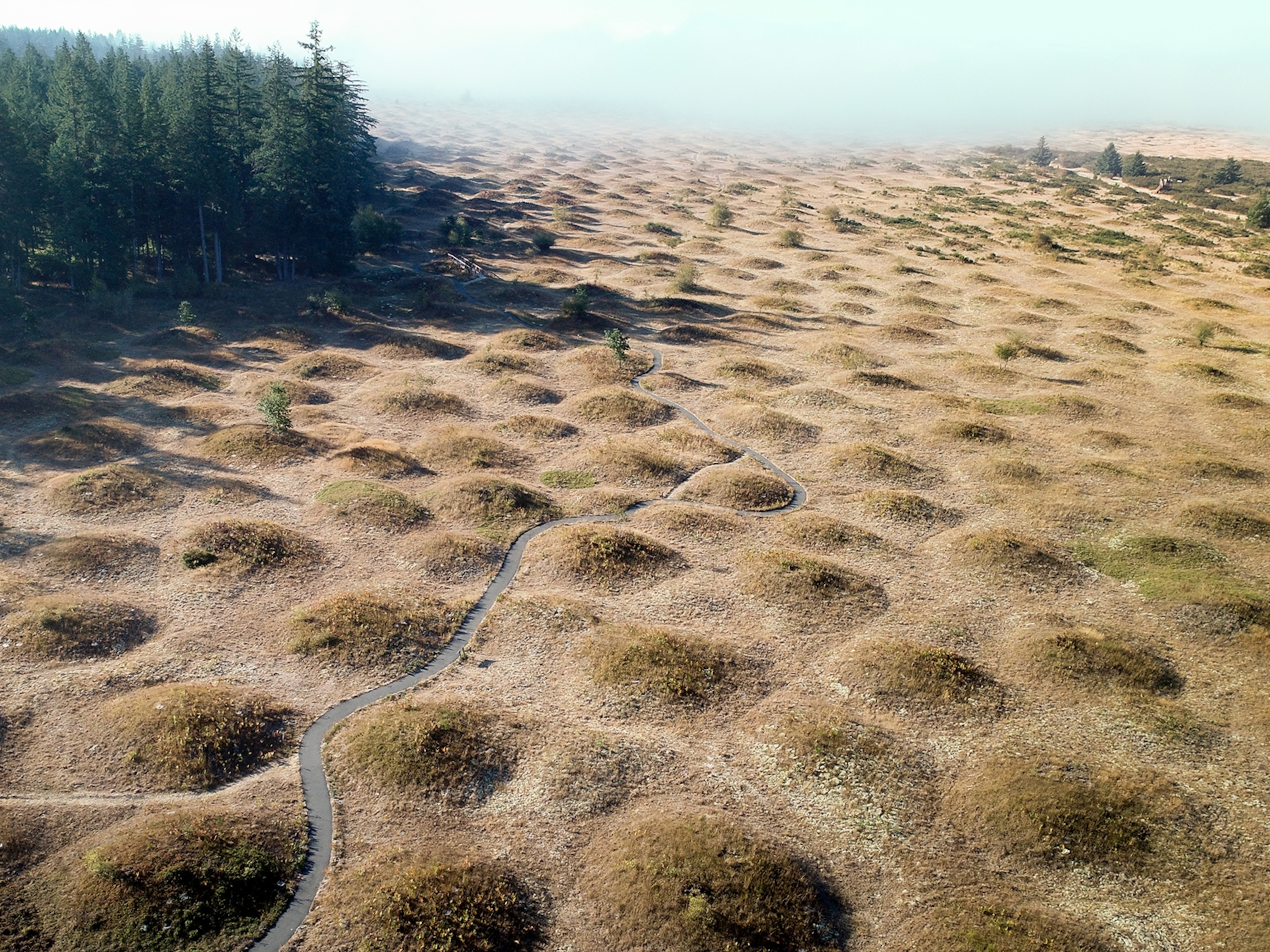
Are dust storms getting worse? Here’s why they’re so destructive.
We’ve known how to mitigate them for nearly a century, but these storms will likely grow in intensity as farming expands and climate change intensifies.
The May sun hadn’t yet risen over Interstate 55 in central Illinois when wind began to blow from the west, sending a coating of dry soil on nearby fields billowing into the sky—and reducing visibility to near-zero for vehicles speeding along the highway. Dozens of cars crashed. Illinois State Police later said 37 people were hospitalized, and at least seven died.
The tragedy illustrates a wider problem. Dust storms have killed hundreds in the U.S. over the last decade, a death rate similar to those of hurricanes, wildfires and tornadoes. Those casualties are likely to increase as climate change intensifies.
We’ve known how to prevent these storms for decades, but help isn’t getting into the hands of farmers that need it. Here’s what you need to know about dust and sand storms, and what to do if you’re caught in one.
What are dust and sandstorms?
Dust storms typically occur when strong winds sweep across dry areas without plant cover, explains Natalie Mahowald, a professor of atmospheric science at Cornell University. As the wind strafes the earth, it breaks up the layer of dust on top of the soil and lifts the light, tiny dust particles into the air. Eventually, the dust and wind combine to create enormous clouds that roll across the landscape.
Historically, dust storms have been most intense in dry regions of the American southwest, which were nicknamed the Dust Bowl in the 1930s for the prevalence of dust storms there. Farming can contribute to these storms through practices like tilling, which involves removing plants and breaking up ground to expose the soil to moisture and air. In the process, tilling severs the bonds holding soil together. If moisture from rain doesn’t come, the soil turns to dust, leaving it vulnerable to strong winds.


Sandstorms are also caused by wind picking up loose particles, but are typically limited to desert regions, such as the Gobi Desert in China or the Sahara in North Africa. They are often smaller than dust storms, since sand is relatively heavy and therefore harder for wind to keep aloft.
Recently a team from the National Ocean and Atmospheric Administration found about 232 people had died from dust storm-related traffic accidents from 2007 and 2017.
In some years, dust storm fatalities were “comparable to some well-covered natural disasters like hurricanes, tornadoes and wildfires,” says Daniel Tong, lead author of the paper and associate professor of atmospheric chemistry at George Mason University.
Dust storms affect drivers mainly by making it impossible to see, but dust can also decrease tires’ traction on the road, causing cars to spin out of control. Beyond traffic fatalities, dust storms also worsen diseases like asthma and harm the lungs. “This dust gets into people’s respiratory systems,” says Mahowald. “It’s not good for humans.”
Are dust storms getting worse?
According to a 2020 study, levels of wind-blown dust across much of the Great Plains have doubled over the last two decades, which the study attributed to expanded agriculture and intensifying climate change.
Experts expect that trend to continue. “I think they’re going to get worse,” says Mahowald. “We’ll probably have an expansion of agricultural land, and that allows more dust storms.” Tong says another key driver is climate change, which means “droughts become more frequent and more severe”, increasing the risk that land will dry out and become susceptible to dust storms.

One response would be to reduce the amount of land used for agriculture: this could be by reducing consumption, reducing production, or intensifying production in a smaller space Other traditional answers include farming without tilling the land (which requires other interventions to prepare the soil, like fertilizer), or planting ‘cover crops’ like rye and barley that hold the soil together between harvests and planting, according to Jonathan Coppess, a legal academic at the University of Illinois Urbana-Champaign and former administrator of the Department of Agriculture’s Farm Service Agency. Another solution would be to integrate animals to fields and plant a diverse array of crops.
Ironically, the country learned to apply these practices following the Dust Bowl storms of the 1930s, says Mahowald. “We know what to do,” she says. “It just really seems like they stopped paying attention to soil conservation.”
Coppess says preventative practices “are increasingly being adopted, but clearly they’re not prevalent.” He pointed to a lack of government support, with aid programs for farmers dealing with “a lot more demand than there is funding.”
Nonetheless, says Coppess, even these solutions are “not necessarily always going to work.” That’s especially true, he says, when climate change is making these weather phenomena worse.
What do we do in the meantime?
When the May dust storm hit central Illinois, Kevin Schott, the local emergency management director, was among those who responded. Schott has served for decades as a firefighter, including a stint in Iraq with the Illinois National Guard, where he saw the devastation sandstorms can cause. Even then, he says of the May dust storm, he has experienced “nothing like this that I can remember.”
Part of the problem was that his team was underprepared. Like most Americans, they thought of dust storms as a southwestern problem. As a result, Schott’s team lacked specialized equipment, which meant that while retrieving victims their eyes filled with dust and their only protection was low-grade masks through which the particles easily passed.
According to Mahowald and Tong, while dust storms will continue to be most intense in the American southwest, the problem will increasingly affect other states, making that lack of readiness a significant risk for both first responders and ordinary people.
If you’re caught in a dust storm, pull off the roadway wherever it’s safe to do so, put your flashers on, and wait until the storm blows out. That simple advice will save lives, says Schott. Part of the reason the Illinois dust storm was so deadly, he says, “was that people just did not slow down.”
You May Also Like
Go Further
Animals
- Orangutan seen using plants to heal wound for first timeOrangutan seen using plants to heal wound for first time
- What La Palma's 'lava tubes' tell us about life on other planetsWhat La Palma's 'lava tubes' tell us about life on other planets
- This fungus turns cicadas into zombies who procreate—then dieThis fungus turns cicadas into zombies who procreate—then die
- How can we protect grizzlies from their biggest threat—trains?How can we protect grizzlies from their biggest threat—trains?
Environment
- What La Palma's 'lava tubes' tell us about life on other planetsWhat La Palma's 'lava tubes' tell us about life on other planets
- How fungi form ‘fairy rings’ and inspire superstitionsHow fungi form ‘fairy rings’ and inspire superstitions
- Your favorite foods may not taste the same in the future. Here's why.Your favorite foods may not taste the same in the future. Here's why.
- Are the Great Lakes the key to solving America’s emissions conundrum?Are the Great Lakes the key to solving America’s emissions conundrum?
- The world’s historic sites face climate change. Can Petra lead the way?The world’s historic sites face climate change. Can Petra lead the way?
History & Culture
- Meet the ruthless king who unified the Kingdom of Hawai'iMeet the ruthless king who unified the Kingdom of Hawai'i
- Hawaii's Lei Day is about so much more than flowersHawaii's Lei Day is about so much more than flowers
- When treasure hunters find artifacts, who gets to keep them?When treasure hunters find artifacts, who gets to keep them?
Science
- Why ovaries are so crucial to women’s health and longevityWhy ovaries are so crucial to women’s health and longevity
- Orangutan seen using plants to heal wound for first timeOrangutan seen using plants to heal wound for first time
Travel
- Why this unlikely UK destination should be on your radarWhy this unlikely UK destination should be on your radar
- A slow journey around the islands of southern VietnamA slow journey around the islands of southern Vietnam
- Is it possible to climb Mount Everest responsibly?Is it possible to climb Mount Everest responsibly?
- 5 of Uganda’s most magnificent national parks
- Paid Content
5 of Uganda’s most magnificent national parks







